Savoury food of the Greek gods or pungent pariah of the picnic? Do you use salted or savoury roe, what do you serve it with – and will anyone admit to a passion for the bright pink, ready-made variety?It is customary to begin a piece on taramasalata by lamenting “the enormous damage” done to its reputation by “the sweet, artificially coloured gloop sold under that name in supermarkets”, as the River Cottage Fish Book has it. But I just can’t bring myself to lie. Apart from a very brief break at about the age of seven, when I discovered what went into the “lurid pink paste sold in plastic tubs”, as Belinda Harley puts it in her book Roast Lamb in the Olive Groves, I’ve been a lifelong devotee of the pungently savoury, vaguely fishy pink stuff. Fancy deli or corner shop, served with toasted pitta or Pringles, I love it all.
But there is room in my heart for the more authentic kind too, the sort you might actually eat in Greece – which is harder to come by in this country. Unless you make your own, of course.
The roe
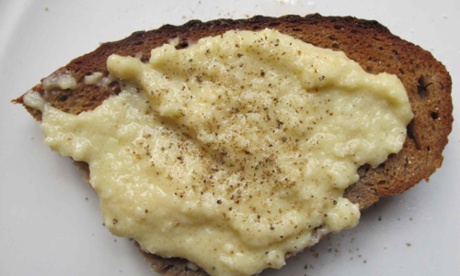
Harley opens my eyes to the fact that tarama is actually “roe from cod, striped mullet, carp, herring or other fish that has been preserved in salt”, rather than smoked stuff more commonly found in the UK, usually from cod. You can buy dried, salted mullet roe, usually sold under its Italian name bottarga if you look a bit harder. I don’t have much luck with tarama, and bottarge is a ruinously expensive thing to buy just to rehydrate.
However, Harley allows the substitution of smoked roe – as Lindsey Bareham and Simon Hopkinson observe in the Prawn Cocktail Years, it is often all that is available in the UK. Any fishmonger who stocks fish from sustainable sources ought to be able to get you some if they don’t already have it in stock. It needn’t be cod; Nick Fisher and Hugh Fearnley-Whittingstall reckon you can make it with pollack or ling roe if you find it. Though I rather like the smoke, for a more authentic salty taste, follow Rebecca Seal’s advice in The Islands of Greece and “soak the roe in cold water for a couple of hours beforehand”, which works a treat at taming the flavour.
The body
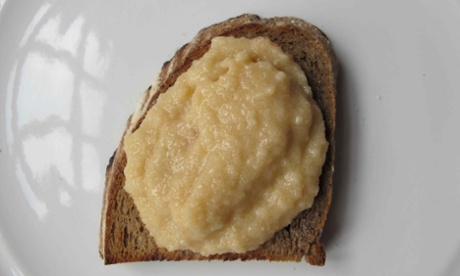
Though Elizabeth David’s recipe for taramasalata in her Book of Mediterranean Food is just flavoured roe, she allows that sometimes bread is added to “diminish the saltiness of the fish”, giving a “milder taste and a thicker consistency”. In some parts of Greece, mashed potato, as used in a recipe from Mazi restaurant in London, or even ground almonds, as chef Diane Kochilas suggests, perform the same function.
I rather like the pungent saltiness of David’s recipe, but it does lack the creamy voluptuousness of the stuff I’m used to. Potato gives a surprisingly good, if slightly gluey, result (though I have to add rather more than suggested in the recipe to thicken it sufficiently), and almonds aren’t bad, though their sweetness needs more roe to balance them, but the bread makes the lightest versions. I prefer the more assertively fishy taramasalatas from Harley and Bareham and Hopkinson, rather than the subtler, more bread-heavy varieties, so I’ll be using a higher proportion of roe to bread.
The liquid
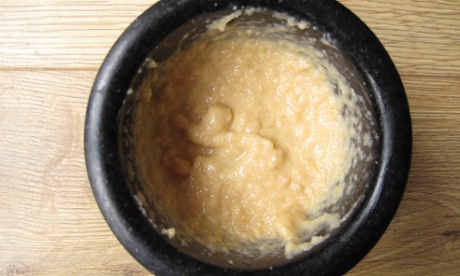
If you are making a large amount, feel free to use sunflower oil, as Mazi suggest, or a mixture of sunflower and olive oil, as in the River Cottage recipe. But neither measure up to the flavour of Harley’s, where “you can taste the extra virgin olive oil in each lovely, salty morsel”. Kochilas thins it with soda water to make it “light, airy and fluffy”, and David suggests cold water, but if you use enough oil and lemon juice, neither should be necessary.
The flavourings
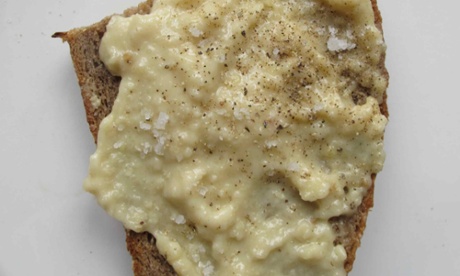
Harley, Mazi and the Prawn Cocktail Years put raw onion in their taramasalata (the last in the form of onion juice), while Seal goes for the sweeter shallot, and David and Kochilas stick with garlic. Though I’m not generally keen on raw onion, a moderate kick works surprisingly well with the salty fish. Finely grating it is the easiest way to ensure you don’t end up with any nasty, chunky surprises (though if you’re going for a smooth result with a food processor, you can just put it all in there for speed if you prefer).
Lemon juice is a given to balance all that salty fish and onion, though I’m not convinced Mazi’s lemon zest does anything more than look pretty. A good grinding of black pepper is to be positively encouraged, but I’m not particularly keen on adding any more heat in the form of cayenne pepper or paprika, as some of the British recipes suggest. Although the green flecks of Harley’s flat-leaf parsley are attractive, I’d prefer to save it as a garnish and allow the fish to speak for itself.
The method
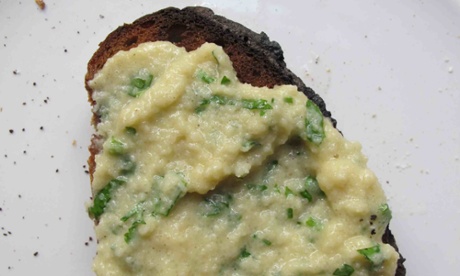
Seal suggests making taramasalata in “a mortar and pestle, which gives it a pleasing rustic look and chunky texture”. It is actually very easy to do, as all the ingredients are so soft, though mine is too small for any decent amount. Judicious pulsing with a food processor can also yield a rougher texture, should you prefer. Serve with toasted bread. Or Pringles.
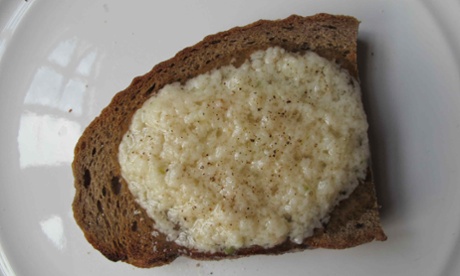
The perfect taramasalata
(Makes 1 large bowl)
250g salted or smoked fish roe
½ small onion
100g stale, crustless white bread
2-3 tbsp lemon juice
200ml extra virgin olive oil, plus extra to serve
Black pepper and flat-leaf parsley, to serve
Taste the roe: if it is very strongly smoked, scoop it out of its skin and soak in cold water for a couple of hours, then drain before use.
Finely grate the onion, then drain through a sieve and discard the solids.
Put the bread in a dish, cover with cold water, then drain immediately and squeeze out the excess water.
Put the onion juice, bread and roe in a mortar or a food processor and mash or pulse together until relatively smooth. Slowly add the lemon juice and oil until well combined, working the mixture all the time, then season and add more lemon juice to taste.
Top with a ring of extra virgin olive oil and a little chopped parsley.
Taramasalata: salty, savoury food of the Greek gods or pungent pariah of the picnic? Does anyone know a good source of salted roe? Who sells the best ready-made taramasalata, what do you serve yours with and will anyone else admit to sharing my passion for the bright pink, gloopy variety?The perfect taramasalata. Photograph: Felicity Cloake/Guardian






